
In his three previously-published books, Composite Materials: Fabrication Handbooks, Volumes 1-3 Author and Professor John Wanberg, took pains to explain the why and how of building with composite materials. Each page was allocated equally between photos and text.
In this new book of step-by-step projects, John takes a different approach. Instead of explaining the theory and what each component is made of, John cuts to the chase. Nearly every page is allocated to photos.
The pictures lead the reader through a detailed how-to sequence. From making the mold, to cutting the fabric, and finishing the part, all the information is here. Projects include everything from fabricating speaker enclosures to hood scoops and cell-phone cases. Some require only simple molds, while others rely on more sophisticated vacuum bagging methods.
Each chapter starts with copy, just enough to explain the project and the goals. Next comes the material panel: a list of all the tools and materials needed to duplicate the project seen in that particular chapter. Finally, the vast majority of each chapter is filled with the how-to photos. Photos that literally show each step along the way, from the initial sketch to the finished part.

This is the story of Stephen South, a young British racing driver in the Seventies who seemed set for the glory that ultimately fell instead to rival Nigel Mansell.
Where one went on to become one of the nation’s most loved characters and the World Champion in 1992, the other’s career faded to a footnote in the cruellest circumstances.
This is a multi-faceted tale of struggle, success, disappointment, controversy, the continuous battle for funding and recognition and, ultimately, heartbreak.
Famously reticent even from his early schoolboy days as a British karting champion, South now talks openly about his career with first-time author Darren Banks. Many leading figures from the world of motor racing are woven into the narrative, which traces the turbulent era of the Seventies, the trials and tribulations which only strengthened South’s quiet yet indomitable resolve, and how close he got to his dream of racing in F1 after a winter of hugely promising test work with Colin Chapman’s Lotus team in 1979.
And for the first time he discusses with chilling candour the events that saw him forced to race in the North American Can-Am sportscar series instead of F1 in 1980, the horrific accident that befell him at Trois-Rivieres in Canada, his physically and emotionally painful recovery in a hospital on the other side of the world, his eventual return home and the subsequent trauma of having to deal with a career now broken and a life permanently altered.
Those key figures recall with affection – with a couple of exceptions – their experiences of working with or racing against this vastly underrated driver who, had he been dealt a better hand by fate, would surely be remembered alongside contemporaries such as Mansell and fellow World Champion Keke Rosberg as one of the leading F1 drivers of his era.
Profusely illustrated with numerous previously unseen photographs from professional archives and personal collections, THE WAY IT WAS – The story of a British racer who was too fast to be forgotten, is a gritty tale of the darker side of a sport when it fails to deliver a racer’s just deserts.

This concise history is the first book in a new series on the Soviet space program and features many rare photographs, diagrams, and charts. When Soviet rocket experts examined the first Nazi V-2s in early 1945, they immediately realized that their own technology was years behind what the Germans had developed. The dropping of the two American atomic bombs on Hiroshima and Nagasaki in August 1945 made the path forward clear: the development of a Soviet atomic bomb, and a suitable missile to carry it. This story begins with the Soviet’s pre- and early war developments in rocket technology, then covers the discovery and study of the V-2s at Peenemünde, Germany. The Soviets assembled remaining V-2 rockets from existing parts and their mode of operation was studied. Developments in the Soviet R and G series missiles in the early 1950s are discussed in detail, as is the development for the peaceful use of Soviet rocket technology in space.

Save time and hundreds of dollars by learning how to repair and overhaul your car’s brakes.
There are many automotive tasks that are best left to qualified and certified professionals when considering repairing your automobile. There are also many tasks that can be tackled by the weekend do-it-yourselfer with a decent level of instruction. While just about any system repair or overhaul on more modern cars has gotten more complex over time, brake diagnosis and repair is still well within reach for the home mechanic with a reasonable set of hand tools.
In Brake Repair: How to Diagnose, Fix, or Replace Your Car’s Brakes Step-By-Step, ASE technician and professional instructor Steven Cartwright takes you through the entire process of servicing your car’s brakes to like-new condition. Ten informative chapters cover everything you will need to know, including chapters on brake history, an overview of function, types of brakes, power assist, troubleshooting, electronic controls such as ABS, and finally, a complete chapter showing you how to do an entire brake job in step-by-step color photos.
With traditional dealership labor rates hovering around $125 per hour these days, it is easy for a standard four-wheel disc brake job to cost close to $1,000 when all is said and done. With the help of this book, you will be able to competently and confidently complete the task in similar fashion for less than half the cost, paying for this book many times over the very first time you use it. Add this valuable tool to your library today.
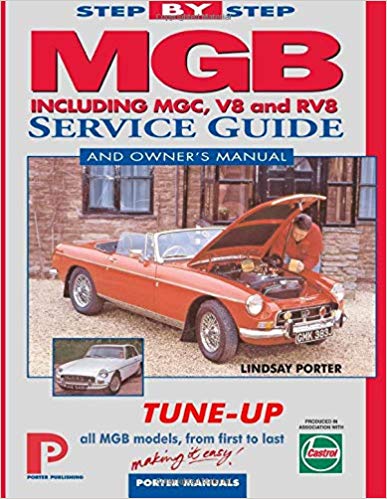
All Models, First to Last
MGB TUNE-UP-SERVICE GUIDE: “This is the book that can pay for itself the very first time you use it.” says well-known motoring writer Lindsay Porter. The complete step-by-step guide to keeping your MGB or MGC Roadster, GT or V8 in tip-top condition. Full service/(‘tune-up’ in USA) intervals and each step described with pictures. Complete Service History Record for you to fill in and keep with the car, maintaining its value. WHAT’S INSIDE: Highly detailed, easy to follow tune-up / service instructions – ideal for beginners and experts alike.Around 300 clear photographs and line drawings.Covers each service interval over the lifetime of your MGB. Plus regular body maintenance and preservation, and HELPFUL CHAPTERS on Body Repairs, Buying Spares, Fault Finding, Safety and Getting Through the UK MoT. All the settings and data you’ll need.TRADE SECRETS: Make your MGB more reliable and maintain its value with the help of Inside Information – trade secrets and tips that workshop manuals never tell you about!SERVICE / TUNE-UP RECORD: This unique feature enables you to keep a fully documented service history of every job carried out, adding to the value of your MGB.And with MGB Auto-Biography, you can compile a personal log of information about your ‘B, providing invaluable assistance when ordering spare parts.MODELS COVERED * Covers all models produced.1800cc Roadster and GT. Chrome and rubber bumper models.INCLUDES MGC and MGC GTMGB GT V8MG RV8.

A fully up-to-date publication, heavily illustrated with both photographs and drawings, detailing the complete procedures needed to handle a steam locomotive. It is often said that steam locomotives appear to be living machines, casting a spell over spectators young and old, from lifelong steam enthusiasts to those witnessing live steam for the first time. This extensively illustrated manual provides a fascinating practical insight into the hard work, knowledge and skills required to safely drive a steam loco. The unique Haynes Manual approach, marrying the engaging text with step-by-step photographs and fascinating illustrations, puts the reader firmly on the footplate to experience the raw power and energy of a steam locomotive in action.

Stephenson’s Rocket is one of the most famous steam locomotives of all time. Designed by Robert Stephenson, with input from this father, George, Rocket set the fundamental design template for almost all the locomotives that followed it. The original locomotive is owned by the National Railway Museum, and is currently on display at the Science Museum in London. Two working replicas of the locomotive have been built. The most advanced steam engine of its time, Rocket was built in 1829 for the Rainhill Trials held by the Liverpool & Manchester Railway (LMR) in order to evaluate locomotive designs and choose the best one for use on this new railway. Five locomotives took part in the trials and Rocket was chosen as the winning design. Published in association with the Science Museum, this manual, illustrated with a wealth of photographs and technical drawings, provides a fascinating insight into the design, construction and operation of Rocket.
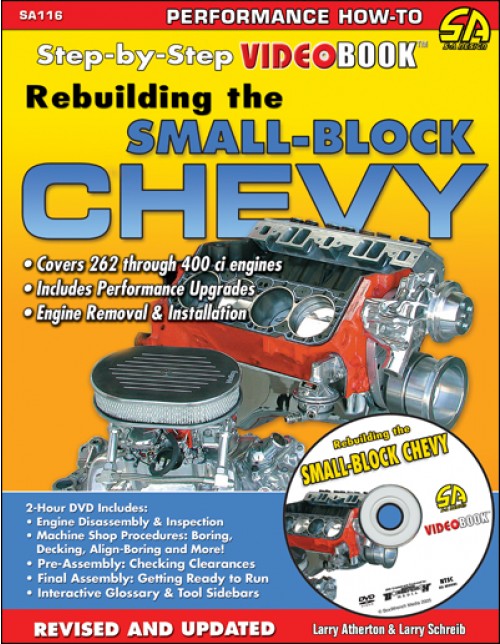
Rebuilding the Small-Block Chevy: Step by Step Videobook is a quality, step-by-step Workbench Book and DVD combination that shows you how to build a street or racing small-block Chevy in your own garage. The book includes more than 650 photos and easy-to-read text that explains every procedure a professional builder uses to assemble an engine from crankshaft to carburetor. The DVD includes more than two hours of coverage showing in detail all the procedures that the book describes. The DVD is filmed in a bright, well-lit studio that really brings out the detail of the engine-building process.
Detailed sections show how to disassemble a used engine, inspect for signs of damage, select replacement parts, buy machine work, check critical component fit, and much more! The DVD takes a trip to the machine shop and shows the viewer the entire process. Performance mods and upgrades are discussed along the way, so the book and DVD combo meets the needs of all enthusiasts, from restorers to hot rodders. This rare instructional combination package is a must-have for every small-block Chevy fan.

John W. Lambert
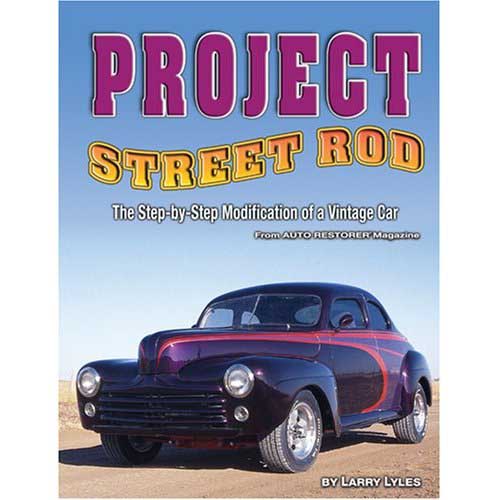
Project Street Rod is a complete guide to restoring a vintage car, written by auto-restoration guru Larry Lyles, a regular contributor to Auto Restorer magazine. In this detailed 21-chapter volume, Lyles walks the car owner through every step of the modification, from the disassembly of the car and to the finish touches, all with detailed instructions. Lyles transforms a beat-up 1946 Ford into a car the “looks nice, is very dependable, and is decked out with many of the [necessary] modern-day trappings.”
The title of each chapter is straightforward and tells the restorer exactly which step Lyles is explaining. The contents includes: beginning the disassembly, exterior and interior, and taking proper measurements of each component; installing the front suspension; installing the engine; shocks, spring and metal lines; floor pan installation, “suicide” doors, chopping the top, completing the top chop, seats, air-conditioning, and brake pedal; first project mock-up; working with body filler; color selection; new parts and fresh primer; ordering critical parts; the final clear coats; buildup; interior trim; headliner and center console; and finishing touches.
Each step in every chapter is photographed as the author progresses along, with captions to spell out exactly what has to happen. The book offers helpful advice about choice of tools and tips to make even beginners feel confident about tackling the many steps involved. With nearly forty years experience in repairing, rebuilding, and restoring classic cars (areetnd lots of unclassic ones like this 1946 Ford!), Lyles emphasizes the reader’s need to organize his or her project by determining the course of the project, researching suppliers, making lists of parts and their conditions, creating spreadsheets of estimated and actual costs, and photographing each component as a reference for later in case the restoration goes off track. Each chapter ends with a “notes” page for the reader to record his or her progress, making this manual a practical workbook as well. When the reader gets to the final pages of the book and reads the sections “Starting Up” and “The Walk Around,” there will be a true sense of accomplishment. An appendix of part suppliers and an index complete the book.

During the ’70s, ’80s and ’90s, hot rods followed very definite trends. It seems every hot rod built in the ’70s reflected the somewhat garish tastes of that decade, and every one had a small-block Chevy powering it. In the ’80s and ’90s, many rods were built to seamless perfection in a modern high-tech style, laden with billet, smooth seams, no rough edges, and a huge price tag.
You had to know there would be a backlash, and rat rods are the backlash to the extreme. As a response to the high-dollar billet-based street rod trend, budget-limited home-based rod builders looked to the past for inspiration and style, and rat rods were the result. These ‘imperfectly fine’ rods rarely sport paint jobs of any kind, and their owners aren’t scared to drive them. They represent a rebellious attitude, but never take anything too seriously either.
Rat rods are high on style but low on budget, and that’s why so many love them. Rat Rods: Rodding’s Imperfect Stepchildren is a celebration of this trend, and almost as importantly, the lifestyle that accompanies it. Never has rodding been so cosmetically indifferent, so socially oriented, so affordable, and most importantly, so much fun! Author Scotty Gosson watched the Rat Rod trend start, grow, and blossom into what it is today. He shares the story with sharp wit, honesty, and a smile on every page. Cars from all over America and around the world are featured, and no two are the same
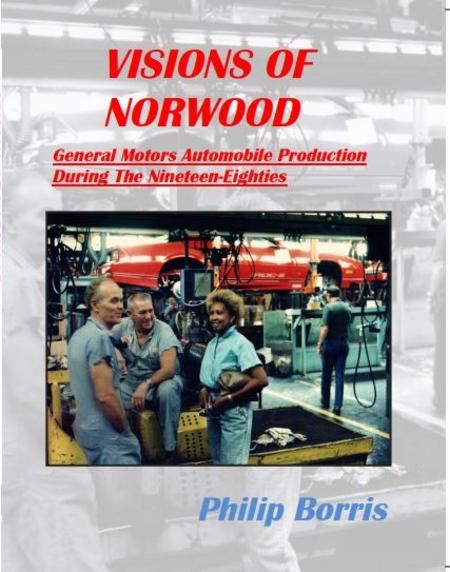
The book that goes inside a General Motors Corporation Automotive Assembly Plant in step by step process sequence showing factory floor and the assembly methods utilized during the 1980’s – all in unparalleled detail.
A Visual delight featuring a combined 651 pictures and illustrations!

The facilities & tools needed for car maintenance, repair, modification or restoration
Working on your car at home both saves you money and helps you to achieve the results you want.
You might want to perform routine servicing, modify a car, restore a car or even build a car from scratch. But to achieve the best outcomes, you’ll need a home workshop. Setting up a Home Car Workshop covers the setting-up and use of a home car workshop.
Whether you’re working with a small or large space, it shows you how a workshop should be laid-out for safety and ease of use, the best parts and tool storage options, and the equipment you should buy.
Want to save money? Inside, you’ll find out how to build your own storage racks and cabinets, how to build a strong workbench – even how to make your own full-length car ramps.
It also covers how to use the tools and equipment, how to weld, how to use hand tools, and gives advice on the best tools to buy to work on the electronics of your car. The book is fully illustrated throughout, with step by step guides, and many useful hints and tips.
If you are planning to set up your own home workshop, this book is for you.

SOLD OUT
In this book of over 500 pages Ermanno Cozza, the true historic memory of Maserati, passionately tells a story packed with behind the scenes truths – right up to today – that have never before been published. He covers half a century of the company’s life, which he lived in close contact with the great motor racing champions, ingenious technicians, designers and, naturally, company life as well, of course, as the unforgettable cars. A carefully chosen collection of photographs and other illustrations complete this invaluable book. “Over 66 years have passed since I walked through the gates of Officine Alfieri Maserati (the Alfieri Maserati Workshops). It was in 1951, and in all that time I can truly say that Maserati took hold of my heart. The factory, the men and the cars have indelibly marked moments in my life. Today, many people consider me to be the living memory of Maserati and, in that way, take me back to those earlier days. In this book, I have tried to convey the excitement of living the Maserati legend so that, step by step, I cover the most important moments of my long and extraordinary experience: the excitement of participation, the joy and pain, the cars and the defeats, the ambitions and the professional difficulties. While I have always enjoyed good health, over the years I have been infected with the Maserati ‘virus’ of which I believe I have been a carrier all this time – and it is a virus of which I never want to be cured” Ermanno Cozza
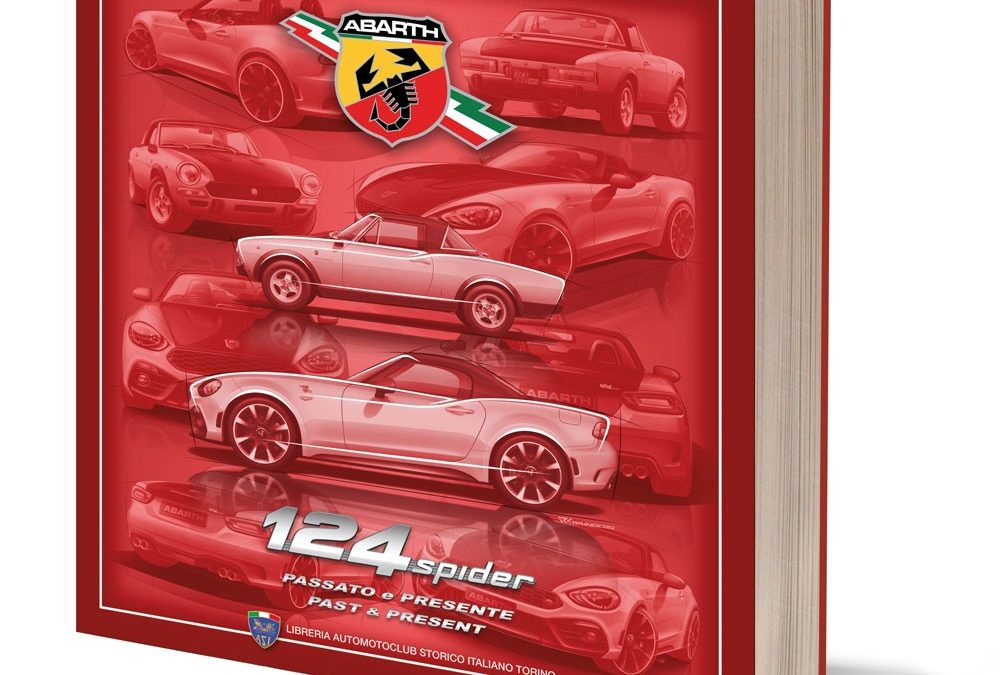
in 1966, Fiat introduced the 124 Spider and, in the space of 50 years, in 2016 proposed the same model revised with current stylistic and technical standards.
In 1966, the Fiat 124 Sport Spider burst strongly into the sports car market with a very elegant line and the world’s first twin-cam engine driven by a toothed belt. Private drivers immediately appreciate the great road qualities and employ it both in speed racing and in rallies. In 1970 the private Alcide Paganelli and Ninni Russo won the Italian Rally Championship; in 1972 the private Lele Pinto and Gino Macaluso, assisted by the House, conquered the Central European Championship (Mitropa Cup). In the same year the Abarth prepares the absolute weapon for the Squadra Corse, which becomes official. In three years of rallying at the highest level the Fiat Abarth 124 Rally enters the legend catching numerous statements and winning the European Championship in 1975 and the Italian Rally Championship in 1974 and 1975. In 2016 the model long regretted by fans returns in a guise all new, very modern and technological, which in any case draws from the great tradition of the past. The book tells the evolution of the 124 Sport Spider in the various displacements and the 124 Abarth Rally and summarizes in seven chapters their competitive events. Finally, it follows the genesis of the new Abarth 124 from design to competitive debut. The texts are supported by over 300 current and current images, many of which are unpublished, detailed technical data sheets, lists of “racing” plates and other documents important for the knowledge and correct conservation of the models.
The authors Elvio Deganello and Roberto Valentini have divided the competences: Deganello – besides being a respected journalist, a competent ASI technical commissioner – has oversaw the historical part; Valentini, who had the opportunity to follow step by step the development of the 2016 model, tells about this exciting new adventure in the world of rallies. The photographs of the Actualfoto archive are essential, allowing to relive the competitions of the past.
Important is the role of Ruben Wainberg, designer of today’s Abarth 124, who has worked on this book with passion, devoting himself to his graphic design, in collaboration with Patrizia Bisa, art director of La Manovella magazine. To follow the chapter of the stylistic transition between the old and the new Fiat 124 model, which is due to the clever pen and inventiveness of Roberto Giolito, already author of a cult model like the new 500. Today Giolito is responsible for the Heritage sector of FCA and therefore represents the relationship between the great history of the brands that are part of the group and its present.
Text in English and Italian

Your step-by-step guide to body, trim and mechanical restoration
This Enthusiast’s Restoration Manual provides step by step instructions for restoring your Triumph TR2, 3, 3A, 4 and $A. As well as his own substantial experience and that of other amateur restorers, the author had the help of various TR specialists and professional restorers in compiling this book. All this knowledge, allied to substantial photographic coverage, allows Roger Williams to provide truly detailed coverage of complete restoration and good advice on how to overcome common problems. This book brings together all of Roger’s TR 2, 3, 3A, 4 & 4A expertise in one easy to use, completely updated and revised edition.
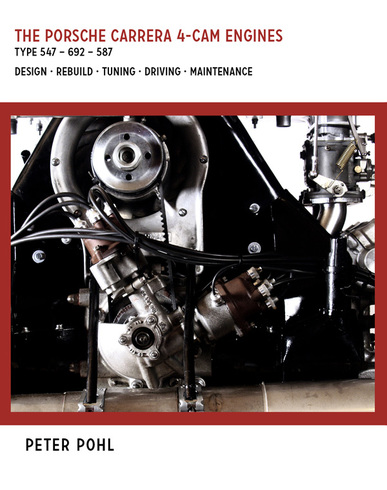
The Porsche 4 cam engine designed by Dr. Ernst Fuhrmann is one of the most interesting and technically demanding designs in the automotive industry of the 1950s and 60s.
In this book Peter Pohl summarises and shares his knowledge and practical experience he acquired over 35 years of repairing, rebuilding and operating these rare power plants.
The design of the engine type is analysed, classified and its weak points are identified. Ways to increase the engine’s performance are explained and the assembly of the Porsche 4-cam engine is described step by step.
Practical tips for the proper maintenance and the operation of this engine complete the book.
With forewords by Ulrich Trispel, Andy Prill and Dietrich Hatlapa.
VERY LIMITED EDITION
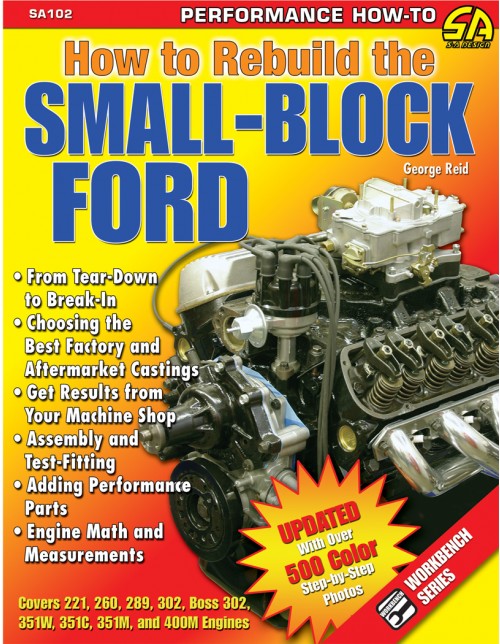
Over the years, the small-block Ford has remained one of the most popular and widely used engines on the planet. From the earliest Fairlanes and Mustangs to the latest Mustangs and light trucks, the Ford small-block has powered them all. With the amount of aftermarket support and rebuildable cores out there, you don’t have to worry about spending an arm and a leg for quality rebuild – especially if you do the teardown and assembly yourself.
In How to Rebuild the Small-Block Ford, CarTech’s unique Workbench format walks you step by step through a rebuild, including: Planning your Rebuild; Disassembly and Inspection; Choosing the Right Parts; Machine Work; Assembling your Engine; and First Firing and Break-In.
The Workbench format also gives you helpful hints and tips on performance upgrades, including cams, heads, ignition, induction, and more. It also points out problem areas to watch for, professional builder tips, jobs that need special care or special tools, and more. Whether you’re a first-time engine builder or a seasoned professional, this is the essential guide to rebuilding your small-block Ford.
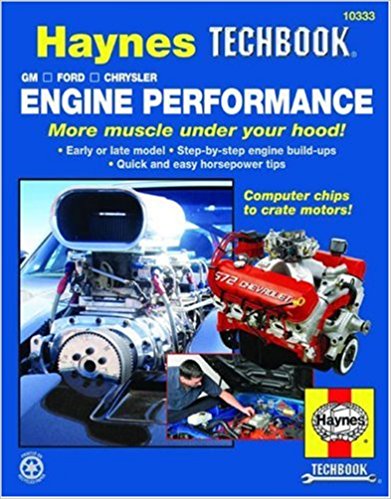
Step by step engine buildups
quick and easy horsepower adds
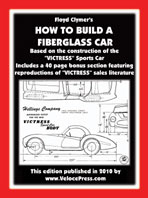
“The original contributors, W. I. Boyce-Smith, Edmond Kelly and Hugh Jorgensen, all played a significant role in the design, development and construction of the fiberglass bodied VICTRESS sports car. While the technology of constructing impact resistant lightweight automobile bodies has advanced considerably since this book was first published, many of the exotic materials and composites in use today are beyond the capabilities available to the average home-based “special” builder. However, this comprehensive and informative book, written in easy to understand language, puts the capability of designing and building a custom bodied special within reach of the home-based enthusiast. The principles it contains are just as relevant today as they were some 50 years ago when this book was first written. The design process is clearly explained, the raw materials required are described, and the construction process is presented in an easy-to-follow step by step procedure. Obviously, this book would also be a valuable reference for anyone contemplating repairing, refurbishing or restoring a fiberglass bodied automobile. This edition also includes a 40 page bonus section featuring reproductions of VICTRESS sales literature.
”






















